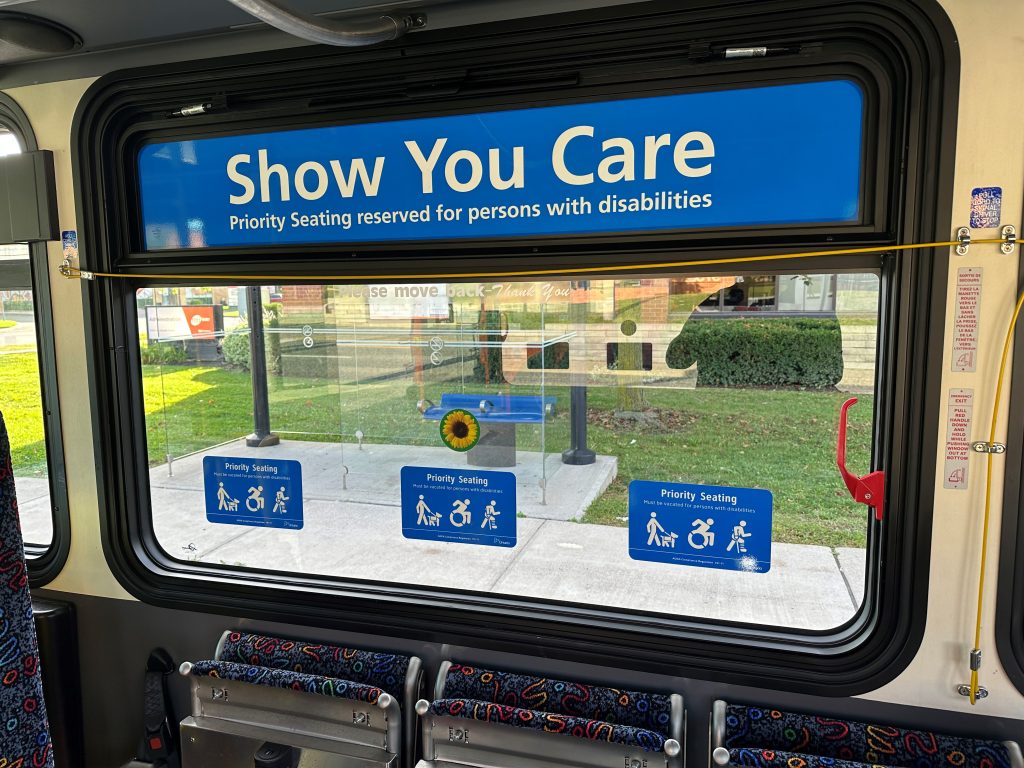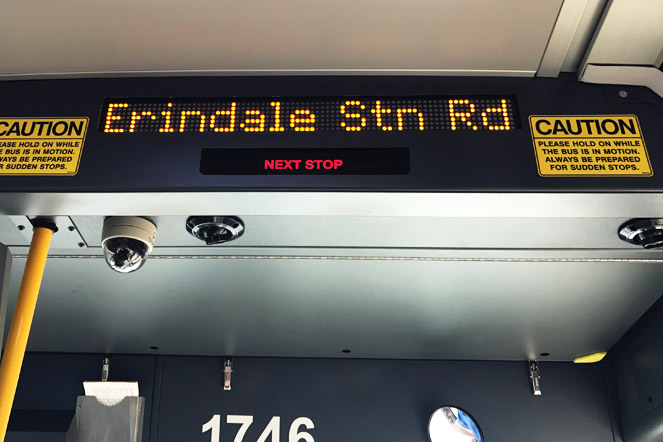Hidden Disabilities Sunflower Program
 MiWay is joining the Sunflower Program to improve the customer experience for individuals with hidden disabilities through the creation of an inclusive environment that destigmatizes disabilities and ensures no individual feels overlooked.
MiWay is joining the Sunflower Program to improve the customer experience for individuals with hidden disabilities through the creation of an inclusive environment that destigmatizes disabilities and ensures no individual feels overlooked.
The Hidden Disabilities Sunflower lets us know that you may need some additional support. It is a discreet sign to indicate to people around you that you may need additional support, help or a little more time.
How can wearing the Sunflower benefit you?
- People around you may ask what they can do to assist you
- You or your carer can use your Sunflower to tell us about the additional help you may need
Lanyards are available at the Information Booth inside the City Centre Transit Terminal, or via Customer Service at miwayhelps@mississauga.ca.
Accessible buses
All MiWay buses are accessible. The low floor, kneeling buses have ramps to help passengers board and exit the bus.

Priority seating
Priority seats at the front of the bus are reserved for people of all ages with mobility issues and other disabilities. All passengers are expected to respect the priority seating area, and vacate these seats for passengers who need them.
Operators are not required to enforce priority seating. We ask that you show consideration for those whose needs are greater than your own.

There are two areas at the front of each bus to accommodate wheelchairs or scooters. However, the seating type may be different depending on the bus. For example, on older buses there is bench style seating, where the three seats fold up together.
Newer buses have theatre style flip seating, where each seat folds up individually on its own. This accessible feature makes it possible to accommodate both seated customers and customers with a mobility device within the Priority Seating area.
Stop announcements
All buses verbally and visually announce each upcoming bus stop. Stop information is also displayed visually on digital display signs onboard the bus.
When you’re at the bus stop, each approaching bus will announce the route name, number and direction.

Bus stops and stations
All accessible bus stops have the blue international wheelchair symbol.
Bus stop pads are installed at every stop where possible. Some stops may not be accessible because there is not enough sidewalk or right of way space on the road.
If there are barriers at your stop, including temporary barriers like snow or road construction, the Transit Operator will make sure you’re able to board and exit the bus at a safe location.
All transitway stations are accessible and feature tactile wayfinding strips installed between all entrances and elevators, and on the bus platforms. Cawthra Station also has an accessible ramp to help passengers cross safely between platforms.
Using the bus ramp
All MiWay buses are equipped with a ramp at the front doors. Follow these instructions on how to board and exit the bus safely.
Boarding the bus
- When the bus arrives and the doors open, let the operator know you want to use the ramp.
- Position yourself 1.5 to 2 metres (5 to 6 feet) away from the bus doors to give the operator space to lower the ramp.
- Move forward up the ramp, facing the operator .
- Pay your fare and ask for a transfer if you need to change buses.
- Move down the aisle to take your seat. If you have a wheelchair or scooter, the operator will help you fold up the priority seats if needed.
If you’re using a wheelchair, back into the space against the padded backrest. Lock your wheelchair brakes and extend the safety strap around a solid section of the wheelchair. Clip the belt end into the buckle, and ensure the belt is retracted, locked, and snug.
If you’re using a scooter, please leave your scooter and sit in a passenger seat. Back your scooter into the securement space, turn the power off and pull the safety strap around the scooter.
On articulated buses (longer buses that bend in the middle) scooters can only be accommodated on the curb side of the bus.
Exiting the bus
- Pull down on the yellow cord above the windows or push the stop button on a yellow pole in advance to request a stop.
- When the bus stops, turn to face the front of the bus and proceed to the yellow safety line on the bus floor.
- Stay behind the safety line until the ramp has been completely lowered.
- Move onto the ramp and exit the bus.
Support person
A support person helps to provide assistance to a person with a disability, such as helping you board or exit the bus, or securing your mobility aid.
If you’re a CNIB card holder or a person with a disability travelling with a support person, you only need to pay a single fare. Tell the operator when you board the bus if you’re travelling with a support person.
Service animals
Service animals or guide dogs provide essential assistance to a person with a visible or invisible disability. Service animals are allowed on MiWay buses.
If your service animal is not wearing a distinguishable vest or harness you may be asked to show a letter from a registered health professional confirming it is a service animal.
TransHelp
If you have a disability that prevents you from using MiWay some or all of the time, you may be eligible for TransHelp. This specialized door-to-door public transit helps people with disabilities stay connected and independent. To learn more or apply, visit the Region of Peel’s TransHelp webpage.
Emergencies
If there is an emergency on board a bus, operators are trained to give you detailed instructions on what to do. For more information view MiWay’s Emergency Procedures Policy.